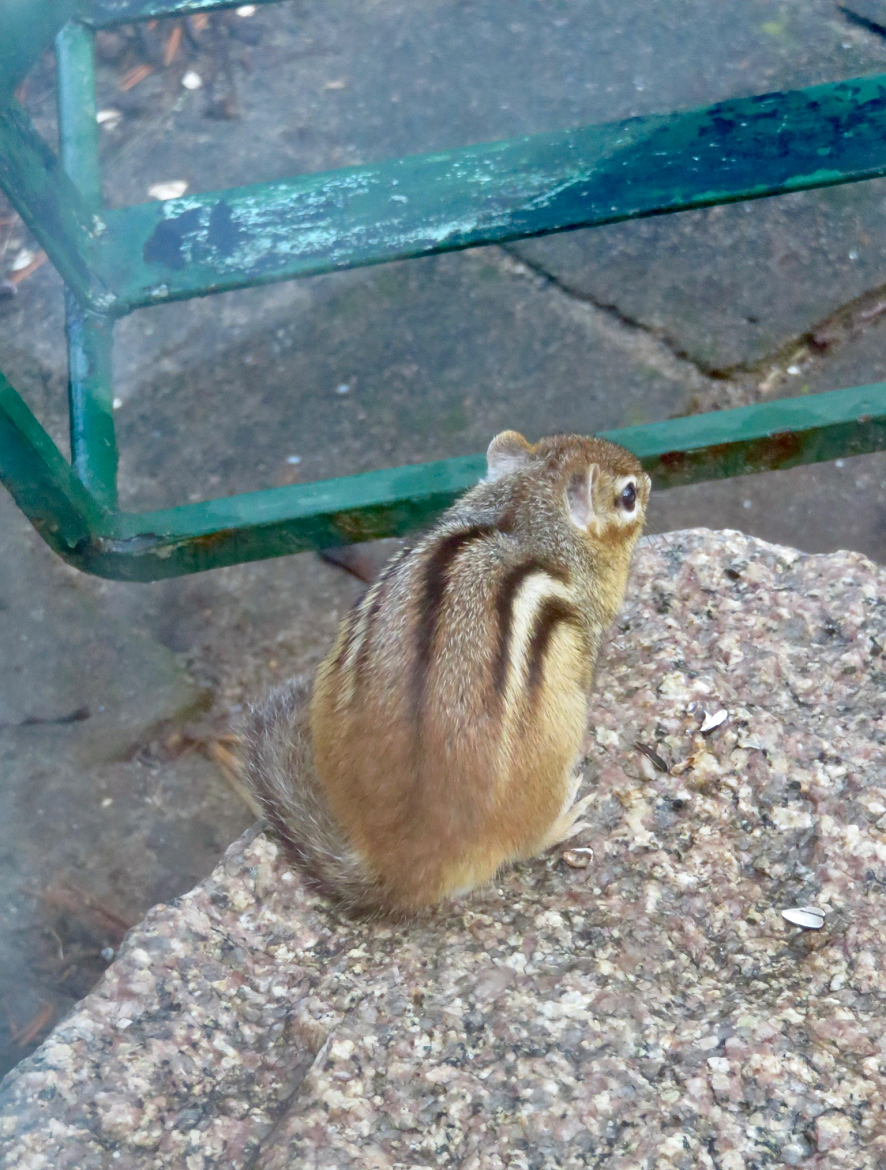I look forward to long weekend walks when there is adequate daylight and no need to rush. Last Saturday’s excursion at an abandoned cranberry bog didn’t disappoint. The sun was shining, and crusty snow still covered the ground. Animal tracks were everywhere, tracks that had repeatedly melted and froze and were largely indistinguishable. Canine? Rodent? Definitely mammalian. Towards the end of the trek, an unexpected sound caught my attention and made me smile: the song of a male red-winged blackbird, the first I had heard this season. Welcome back!
Yesterday, I witnessed another first: my resident chipmunk ventured out into the world after a long winter absence. Sitting on the back step, it was uncharacteristically sluggish, as if it were cold, sleepy, or both. While this image, shot through a glass door, is less than lovely, it does illustrate the animal’s stillness. Chippy will get its glamour shots and full treatment in a later post.

A cavalcade of change begins at this time of year. Some animals return from migration; others emerge from hibernation. They begin their reproductive cycles in sync with longer days and warmer temperatures. Plants that have been dormant resume growth: seeds sprout, buds break, leaves and flowers appear. Soon each day will bring multiple “firsts.”
We all realize that nature changes with the seasons, but few people notice the details and how they correspond to calendar dates. Spring isn’t one homogenous event. Rather, it is a sequence of thousands of events whose timing is critical to the survival of native species. Many stages of plant and animal life repeat on an annual cycle: they occur in a predictable sequence at approximately the same time each year. The study of these seasonal natural phenomena is called phenology. It is a scientific field based upon observation. It is also an excellent means to increase one’s awareness of the natural world. With that in mind, I am proposing a new challenge for readers of A Glimpse of Nature.
For the next four weeks, pay special attention to firsts, lasts, and distinct changes in behavior: the first appearance of an animal species, the first flowers or leaves to emerge, the first sounds of spring. Then record one observation per week in the forms linked below. If you'd like to share an image or sound recording, email it to lrubinacci@amesfreelibrary.org. Please include your name and a brief description of the upload content.
Links to “Nature’s Rhythms” Google Forms:
As you observe, cast a wide net that includes daytime, nighttime, fair and stormy weather. Don’t rely too heavily on vision. Spring also brings new sounds and odors and sensations. Though less conspicuous, don’t overlook “lasts” – such as the last frost, the last ice on a pond, the last sighting of a northern species.
Participants who submit four consecutive weeks of observations will receive a small gift. A grand prize will be awarded to the set of observations that best reflects wide-ranging curiosity and attention to detail.
It is best to focus on common species in accessible areas. This will enable you to compare one year’s observations with the next - and the next - until the progression of activity becomes as familiar as our monthly calendar.